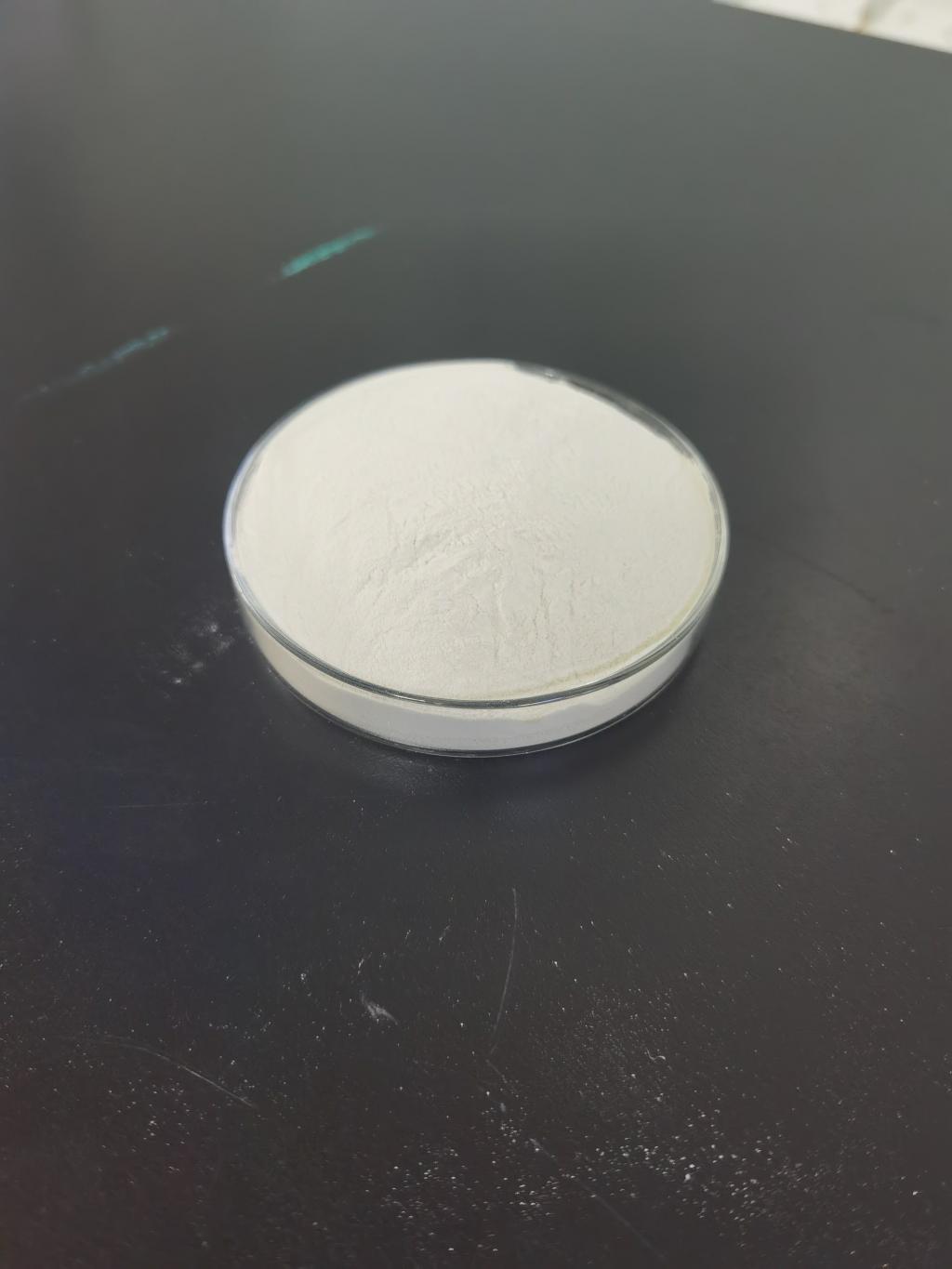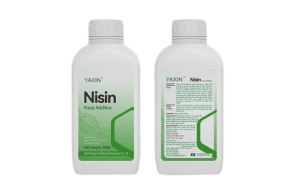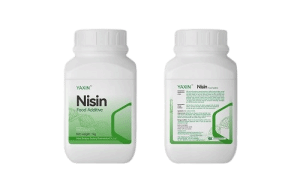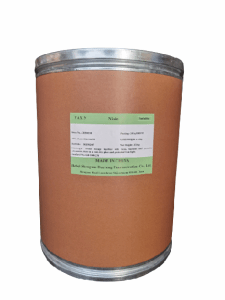Tel:+8618231198596

News
 CONTACT
CONTACT
 CONTACT
CONTACT
- Linkman:Linda Yao
- Tel: +8618231198596
- Email:linda.yao@dcpharma.cn
- Linkman:CHARLES.WANG
- Department:Overseas
- Tel: 0086 0311-85537378 0086 0311-85539701
News
Nisin: A Biopreservative Solution for Minimizing Food Waste.
TIME:2023-10-09
Nisin, a natural antimicrobial peptide produced by certain strains of bacteria, has been employed in the food industry for decades to extend the shelf life of perishable products. However, recent research has uncovered its potential to significantly reduce food waste by preventing spoilage and decay. In this article, we will explore how nisin serves as a biopreservative, its applications across the food supply chain, and its role in combating the global food waste crisis.
The Global Food Waste Epidemic
Food waste is a complex issue with wide-ranging implications. It contributes to hunger, economic losses, and environmental degradation. The consequences of food waste include:
Hunger and Food Insecurity: While a significant portion of the world's population suffers from hunger, approximately one-third of edible food ends up in landfills or waste bins. Redirecting this surplus to those in need could alleviate food insecurity.
Economic Losses: Food waste represents a significant economic burden. Producers, retailers, and consumers collectively waste trillions of dollars' worth of food annually.
Environmental Impact: Rotting food waste generates methane, a potent greenhouse gas that contributes to climate change. Additionally, the resources invested in food production, such as water and energy, are squandered when food is wasted.
Resource Depletion: Wasting food also means squandering the natural resources used in its production, such as land and water. This contributes to resource depletion and threatens global sustainability.
Addressing food waste requires a combination of policy interventions, consumer behavior changes, and innovative technologies. Nisin, as a biopreservative, offers a valuable tool in this fight.
Nisin as a Natural Biopreservative
Nisin is a peptide antimicrobial produced by lactic acid bacteria, primarily Lactococcus lactis. It exhibits potent antimicrobial properties against a wide range of bacteria, including Gram-positive pathogens. In the food industry, it is recognized as a Generally Recognized as Safe (GRAS) substance and is used to extend the shelf life of various products, including dairy, meat, and canned goods.
Nisin acts by disrupting bacterial cell membranes, preventing the growth of spoilage and pathogenic bacteria. It is particularly effective against certain bacteria responsible for food spoilage, such as Listeria and Clostridium. By inhibiting the growth of these microorganisms, nisin can significantly extend the freshness and safety of food products.
Nisin Applications in the Food Supply Chain
Nisin's potential to reduce food waste is not limited to a single stage of the food supply chain; it can be applied at various levels, from production to consumer use.
a. Food Production: Nisin can be used during food production and processing to inhibit the growth of spoilage and pathogenic bacteria. This ensures that food products remain safe and fresh for longer periods, reducing the likelihood of spoilage and waste.
b. Food Distribution and Retail: Nisin can be incorporated into packaging materials or used as a food coating to extend the shelf life of products during distribution and on store shelves. This reduces the frequency of restocking and disposal of unsold goods.
c. Consumer Use: Consumers can also benefit from nisin as a biopreservative. Products containing nisin stay fresher for longer in home refrigerators, reducing the likelihood of consumers discarding food due to spoilage.
Nisin's Role in Reducing Food Waste in Specific Industries
Nisin's potential as a biopreservative extends to various sectors of the food industry. Here are some notable examples:
a. Dairy Products: Dairy products, such as milk, yogurt, and cheese, are highly perishable. Nisin can be used to extend the shelf life of these products, reducing dairy-related food waste.
b. Meat and Seafood: Nisin can inhibit the growth of spoilage bacteria in meat and seafood products, ensuring that they remain safe and fresh for consumers.
c. Canned Goods: Nisin can be used in canned goods to prevent the growth of bacteria and fungi that can lead to spoilage. This extends the shelf life of canned products, reducing waste.
d. Baked Goods: Nisin can also find application in baked goods, such as bread and pastries, to prolong their freshness and edibility.
Sustainability and Environmental Impact
One of the significant advantages of using nisin as a biopreservative is its environmental sustainability. Unlike synthetic chemical preservatives, nisin is a natural product, and its production can be relatively eco-friendly. The use of nisin can contribute to a more sustainable food system by reducing the need for synthetic additives and lowering food waste's environmental footprint.
By extending the shelf life of food products, nisin helps reduce the demand for additional resources, such as water, energy, and agricultural inputs, needed for food production. Additionally, reducing food waste means less food ends up in landfills, which in turn lowers methane emissions and mitigates the environmental impact of food waste.
Challenges and Considerations
While nisin offers significant potential as a biopreservative, its widespread adoption faces some challenges and considerations:
a. Regulatory Approval: Nisin's use as a food biopreservative is subject to regulatory approval in various countries. Ensuring compliance with local regulations is essential for its adoption.
b. Consumer Perception: Some consumers may be unfamiliar with nisin or have concerns about its use. Educating consumers about the safety and benefits of nisin is crucial.
c. Application Compatibility: The successful use of nisin as a biopreservative depends on its compatibility with specific food products and production processes. Researchers and food producers must tailor its use to each application.
d. Cost: The cost of nisin and its incorporation into food products may be a consideration for some food producers, especially smaller businesses. Finding cost-effective solutions is important for widespread adoption.
Future Prospects and Conclusion
Nisin, as a biopreservative, has the potential to play a significant role in minimizing food waste across the food supply chain. Its natural origin, effectiveness against spoilage and pathogenic bacteria, and positive environmental impact make it a valuable tool in the fight against food waste.
As the world grapples with the urgent need to reduce food waste and promote sustainability, nisin offers a promising solution. Continued research and development efforts to optimize its use in different food products and production processes will be essential. Furthermore, regulatory authorities, food producers, and consumers must work together to ensure the responsible and safe adoption of nisin as a biopreservative.
In a world where food security and sustainability are paramount concerns, nisin's role in minimizing food waste stands as a testament to the power of innovation in creating a more responsible and efficient food system. With concerted efforts and thoughtful implementation, nisin can contribute significantly to the global goal of reducing food waste and creating a more sustainable future.
- Tel:+8618231198596
- Whatsapp:18231198596
- Chat With Skype







